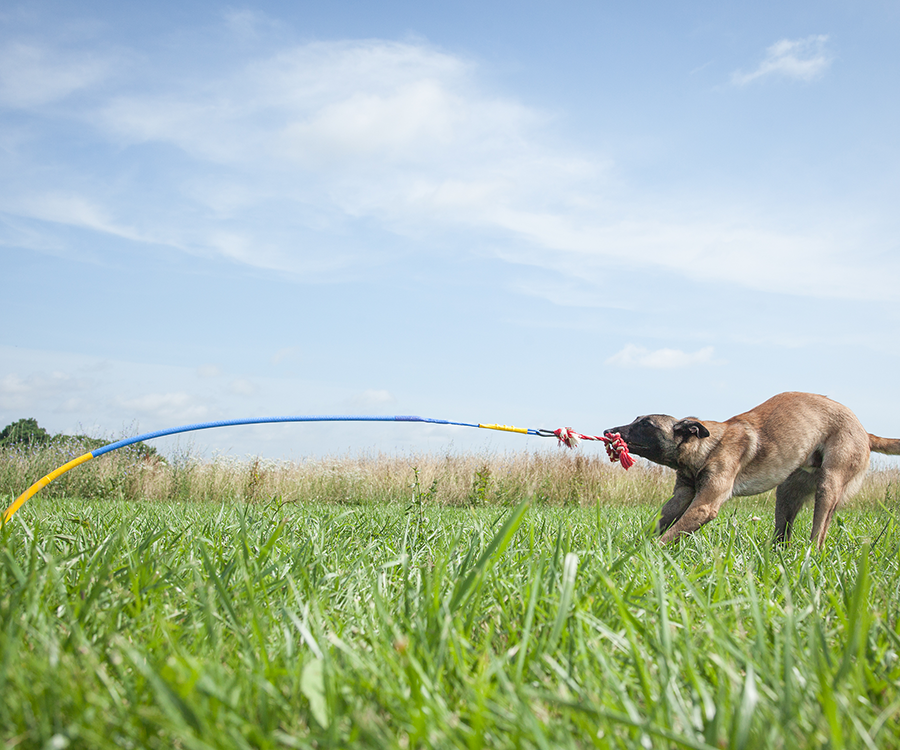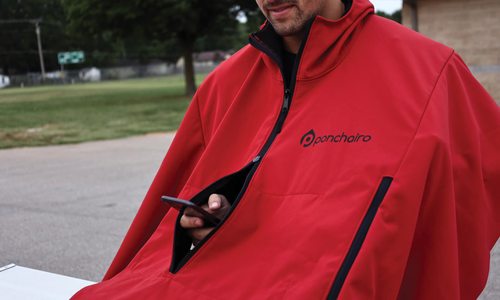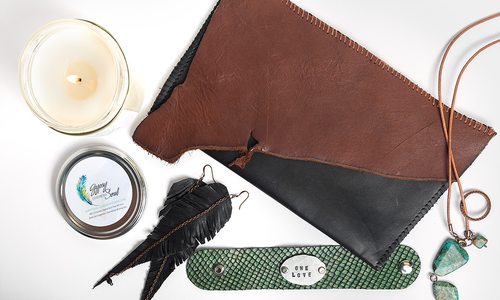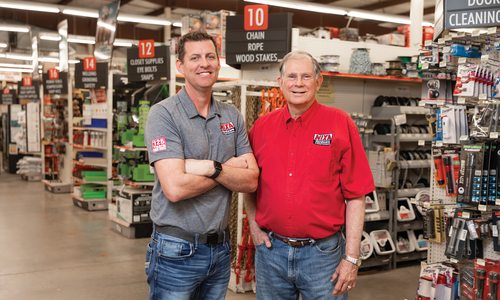
Startups
Tether Tug is Dog's Best Friend
The creators of Tether Tug knew they had made a toy that would keep any high-energy dog occupied, but getting it into owners’ hands was another story.
By Karlee Renkoski | Photos courtesy Tether Tug
Sep 2016

Four years ago as an inventor of medical products, Dr. Roger Huckfeldt never dreamed he and David Hayford would be co-owning a dog toy company trending toward the million-dollar mark. Huckfeldt’s son Adam came to him with the idea of a tug-of-war toy that a dog could use even without the owner present. During the process of developing the toy, Tether Tug created strong relationships with its customers and now has six available sizes manufactured at its warehouse in Nixa and by Stingray International in Dallas.
But despite its local production, you probably won’t see Tether Tug on shelves in 417-land; more than 95 percent of Tether Tug products are sold online. “Initially we thought we would go straight to retail but quickly realized that a 5-foot pole with a rope on the end doesn’t look that great on a shelf,” says Matt Price, the director of marketing and e-commerce.
Due to its initial failure, Tether Tug began selling its hand-assembled toys online and marketing itself on Facebook, where most of its customers are. Price has learned to target specific dog breed owners, to promote video ads and to use affiliate marketing to increase product sales. He encourages online companies to find out where their customers are and to continuously learn about using those platforms.
Aside from its own marketing and sales, Tether Tug products are sold online by Amazon and Bed, Bath & Beyond. The company scored both connections while at an industry trade show. So what’s next for this online retail giant? Aside from continuous improvements to their existing models, Huckfeldt says Tether Tug now faces the challenge of creating an interactive counterpart for another furry friend—cats.
Behind the Design: Tether Tug
Tether Tug products appear deceptively simply, but Co-Owner Roger Huckfeldt shares the hard work that goes into making each toy. It’s a difficult and tedious process due to the 17 pieces going into each Tether Tug. Many of these pieces were originally designed by local partners, and even now some of them come from companies around 417-land.
In essence, there are four main components of each Tether Tug: a post, core rope, base and detachable toy. Huckfeldt and others played with five or six different materials for the post and eventually decided on a fiberglass fence post. “It had to be strong enough to not break with normal force but flexible enough that it could bend and, after bending, recoil to its normal force,” Huckfeldt says.
The fiberglass is strong but can break without a distributed force, so it feeds down the center of a strong, elastic rope and other elastic materials. This core rope extends from the base to the end with the attached toy. After each of these steps, the materials are covered in heat shrink and secured with mechanical fasteners.
Now here comes the exciting part—for dogs anyway. “What is it dogs are inherently drawn to? Tie a knot in the rope or add a ball on the end and suddenly it’s a toy,” Huckfeldt says. A carabiner connects the rope to a toy ball, which can come in all different shapes and styles using softer ropes and tennis balls.
Even harder to create initially than the other pieces was the base of Tether Tug, the last step in the process. It had to be easy enough to get in the ground, strong enough to stay in the ground, large enough to secure the pole and have the ability to turn 360 degrees. They eventually created a 14-inch long steel sleeve to fit the pole, with a wedge point that’s driven into the ground. The base and other components are then boxed with a display panel on the outside and shipped to an energetic dog and its owner.
In reality, Huckfeldt says the first, most important step before inventing is research. Part of Tether Tug’s success came from looking at what the market could support, searching for companies with effective and inexpensive materials and understanding the value and need of the product. “In every product my standard approach has always been not what should it look like, but what is the real issue?” Huckfeldt says. “I look at it from a common-sense standpoint: realistic, inexpensive, and common users can easily understand how it should work.”











